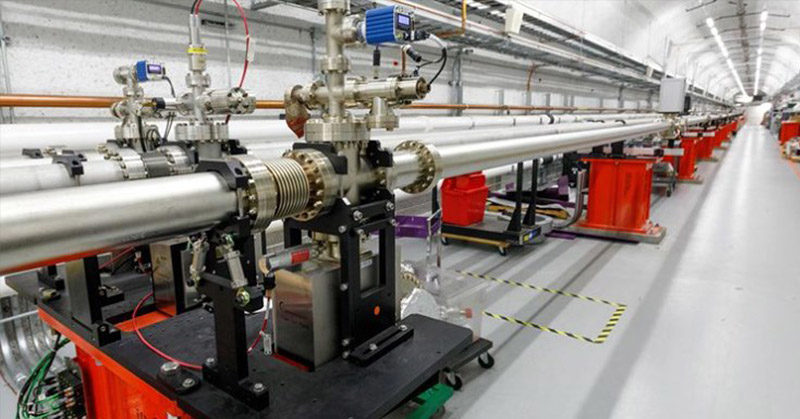Did you know you could boil water by anything other than heating it? Neither did I, until now: Stanford scientists have created a sound that boils water due to its sheer volume.
The Sound That Boils Water
Researchers at Stanford University’s SLAC National Accelerator Lab have produced the loudest possible underwater sound. Known as the sound that boils water, this sound is so loud that it instantly vaporizes the water that it is played in. (1)
How it Works
Using SLAC Lab’s Linac Coherent Light Source X-ray laser to cut through tiny jets of water, these powerful x-ray pulses vaporized the water immediately upon contact. This unleashed “shockwave trains” of alternating high and low pressures into the spray. (1)
The pressure of the sound registered at 270 decibels. (1)
Read: A Canadian Company Has Created An Incredible Invisibility Shield
How Loud is it Really?
We hear the number of 270 decibels, but without context, most of us don’t really know how loud that actually is. Here are some comparisons for context:
- The loudest sound ever recorded by NASA was the first stage of the Saturn V rocket launch at 204 decibels. (1)
- The average rock concert is between 135 and 145 decibels. (3)
- Fireworks range between 145 and 150 decibels. (3)
- The call of the blue whale, the loudest animal on earth, can reach up to 188 decibels. (3)
- A one-tonne bomb of TNT reaches 210 decibels. (3)
- A 5.0 Richter earthquake can reach 235 decibels – enough to kill you. (3)
270 appears to be the upper limit for how loud sound can be in water – any louder and the water simply breaks apart. (1) If you’re wondering what it sounds like, trust me, you don’t want to know: A sound that loud would not only burst your eardrums but your lungs and heart as well. (2)
Read: Bacteria that eat metal accidentally discovered by scientists
Why is this Important?
Scientists use water jets to spray samples of various things such as enzymes and protein receptors into the path of x-rays. These act like strobe lights that show structures and processes at the atomic level. The more understanding they have of shockwave trains, the better they will be able to protect samples during experiments. (1)
Keep Reading: Watch a diver swim right next to a 12-foot giant squid in Japan
- https://stanfordmag.org/contents/the-sound-that-almost-boils-water
- https://www.cnet.com/news/stanford-scientists-created-a-sound-so-loud-it-instantly-boils-water/
- https://www.ishn.com/articles/105610-how-many-of-the-top-10-loudest-noises-have-you-been-exposed-to#:~:text=The%201883%20the%20Krakatoa%20eruption,as%20Perth%20in%20Australia%20approx.

